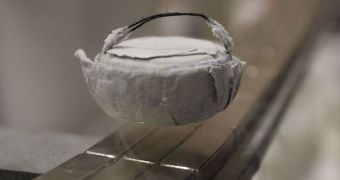In a new scientific study, experts demonstrated that the phenomenon known as “incoherent excitations” can be used to make better sense of the behavior copper oxide materials have just before they turn into superconductors.
The research was carried out by a team based at the University of British Columbia, in Canada, that focused its analysis exclusively on copper oxides, materials that are commonly used to make advanced magnets.
According to the research team, this is the first time ever when scientists have been able to determine precisely when electrons move from acting as separate, individual particles to behaving like “many-body entities.”
Conducting such investigations in peculiar materials such as superconductors is notoriously difficult, which makes the new achievement all the more impressive.
“We’ve never been able to directly quantify the nature of electron behavior within these materials across the entire phase diagram – the transition from non-superconducting to superconducting behavior,” explains Andrea Damascelli.
The UCB associate professor holds an appointment as the Canada Research Chair in Electronic Structure of Solids with the Department of Physics and Astronomy at the university.
“A combination of advanced spectroscopic techniques, and access to very pure cuprate crystals produced at UBC have allowed us to measure what’s going on below the surface of a high-temperature superconducting material through the entire progression of different phases,” the scientist adds.
Details of the new investigation have been published in a new research paper that appears in this week's issue of the esteemed scientific journal Nature Physics.
The study was conducted at the newly-founded UBC Quantum Matter Institute, and experts at the US Department of Energy's (DOE) Lawrence Berkeley National Laboratory (Berkley Lab) Advanced Light Source (ALS) were also involved.
This is the first research paper to come out of the UBC, and experts at the university say that it represents a wonderful start for work soon to follow from the lab, Science Blog reports.
Superconducting materials are useful in various applications because they have an electrical resistance of exactly zero, which means that electricity flows through them unimpeded.
The most common uses for superconductors are in mass spectrometers, medical imaging (MRI and NMR machines), and magnets used in particle accelerators.

 14 DAY TRIAL //
14 DAY TRIAL //